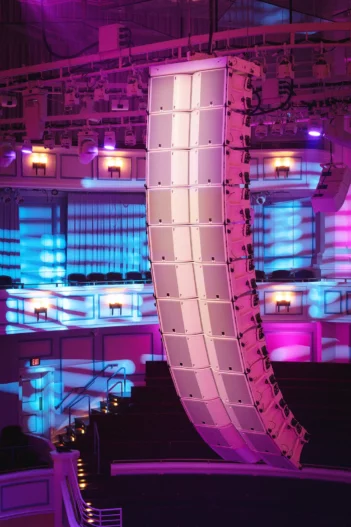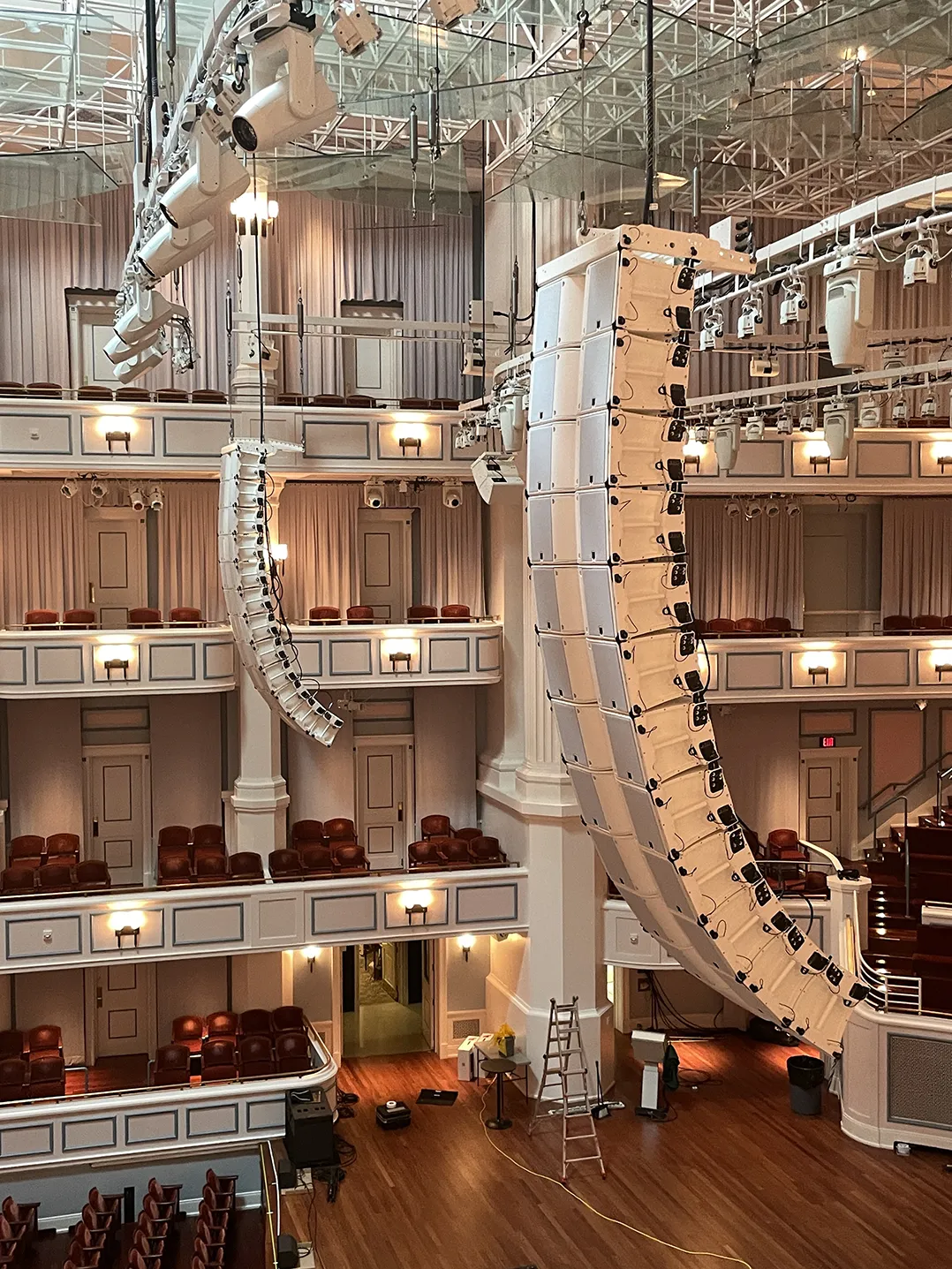Center for the Performing Arts President/CEO Jeff McDermott knew the Palladium needed upgrades to its sound system.
“We always knew we needed a sound system specifically designed for it,” McDermott said. “We also knew our lighting and sound system was aging. Like technology – I tell people if you had a 14- or 15-year-old iPhone or Android, you would be way out of date with it.”
McDermott said there was a need to upgrade to attract more top artists, plus it was getting to the point where it was hard to find parts for speakers and lighting at the Palladium.
“It was pretty much state-of-the-art in 2009 and 2010 when ordered and installed,” he said of the Palladium, which opened in 2011. “Time changes that, so we’re very excited to get two new systems that will make a big difference to our patrons.”
McDermott said the Palladium initially was envisioned as more of a classical concert hall.

“It was certainly made for that, but didn’t exclude it from being an opera or country hall, or a hall that could be used for a wide variety of art forms,” McDermott said. “What we found was the speakers were fine for their time and they did a nice job for a lot of years. When it was time to change, it really made sense to go with something more universal. We know we had specific artists that asked what our sound system is and they had certain requirements we couldn’t meet. There have been opportunities we have not been able to fulfill because the sound system, the PA system, wasn’t the appropriate system. I think this will eliminate that altogether.”
One example is Ringo Starr & His All-Starr Band determined the previous sound system wasn’t suitable for their show.
“It’s one thing to have a hall that is acoustically perfect, but the PA system has to complement it,” McDermott said.
The cost for the new sound and lighting systems is approximately $1.5 million, paid from the city’s 2021 tax increment financing bond issue.
The Center’s staff, with the aid of Carmel Redevelopment Commission, which oversees capital improvements on the campus, solicited three bids for the design and installation of the system. The winning proposal came from two Greenfield-based companies, Force.Tech and Mid-America Sound, which are leaders in audio technology. Their design was based on an acoustic analysis conducted by Haverstick Designs, a Carmel company. The design added microphone testing throughout the room and the use of LiDAR technology to create a three-dimensional digital model of the interior surfaces.
Installation of key components took place in June. According to the Center’s news release, most notable are the two line arrays – the curved speaker stacks that hang over each side of the stage and produce most of the volume – are more robust. The number of speakers has grown from nine to 12 each for better coverage throughout the room. In addition, two subwoofers are on either side of the stage for bass reproduction and new fill speakers supplement the sound in areas not fully covered by the main speakers.
The new lighting system was installed by the production staff earlier in 2024. The staff replaced outdated incandescent lamps with LEDs, which are brighter, more durable and more energy-efficient while offering superior color-mixing capabilities. A new control console makes it faster and easier to change settings in the moment during a concert.
The remote-controlled lights have quieter motors and cooling fans that can be switched off for silent operation, particularly important during classical performances.




